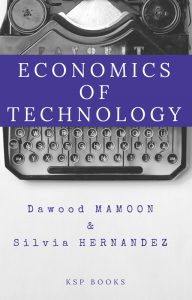Synopsis
One of the most significant topics in economics and social sciences is to explain the active role that science and technological innovation play in the economic and social change of nations.
Firstly, the term innovation and science advances are used so widely to indicate something new and different. However, this definition doesn’t tell us how we would recognize an innovation and science advances, how we could categorize them, how to explain their origin and evolution, as well as how to measure them in markets and society.
The goal of this book is to explain some characteristics of technological innovation and science in society. In particular, this book focuses on new researches that can clarify the origins of studies concerning science and innovation, the categorization of innovation, the sources and aspects of the evolution of innovation and some techniques to measure technological advances and predict which technologies are likely to evolve rapidly in society.
This book is designed for students, undergraduate, graduate or managers in business and public administration that wish to clarify critical concepts in the field of science and technological innovation and that wish to expand their knowledge on these subjects areas.
I have attempted to minimize the use of extremely complex theories and studies. Those that I include are integrated with examples and actual applications in economic, social and organizational settings. In order to attain a reasonable depth, this book concentrates on selected topics of particular relevance to problems of science and technology, and which meet the needs of the intended audience.
The book is divided in four interrelated parts.
– First of all, the chapter 1 of the book is an introduction to the methods of inquiry in social science.
– The first part of this book focuses on the origin of studies concerning economics of innovation and science.
– The second part contains a new approach to classify technological innovation considering the interaction between technologies. A vital theorem is stated to explain and generalize how technologies evolve over time and space.
– Part three of the book concentrates on sources of innovation and science in society, the role of disruptive firms in generating radical innovation and how types of government can affect innovative outputs of countries.
– The final part of the book explains some approaches to measure the evolution of innovation to support technology analysis and management of technology directed to foster technologies that are likeliest to evolve rapidly in society.
However, no single book could hope to cover adequately all aspects of what is wide and essentially multi-disciplinary field of inquiry, and it is not the intention to attempt to cover all aspects of science evolution and technological change. It is regrettable but inevitable therefore that some topics are excluded or given only limited coverage and it is not possible to meet fully the preferences of all readers. I hope that readers dealing with technological innovation and sociology of science, such as students and managers, policymakers, etc. are able to see this text as a starting point to understand the complex processes of science evolution and technological change in society.
This book’s strengths and weaknesses are the responsibility of author.
Contents
About Editor
ISBN
978-605-2132-93-7
Date of Publication
December 15, 2018
File Size: 4214 KB
Length: xi + 298 pages
This work is licensed under a Creative Commons Attribution 4.0 International License.
















